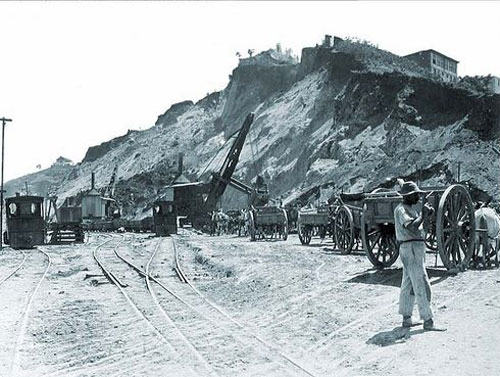
Rio de Janeiro is well known for its spectacular landscape of beaches and highrise mixed with steep green hills, suchs as Corcovado, Gávea and Pão de Açucar. Today, it is hard to imagine that one of those large hills was radically removed from the skyline about a hundred years ago. In the area of Avenida Rio Branco and Cinelândia, presently the financial and cultural heart of the city, there used to be an enormous hill: Morro do Castelo.

Cinelândia, Rio de Janeiro. Photo: José Maria de Sá
In the early 1920’s the city decided to remove the entire hill and the Jesuit monestary from the 16th century as well as the settlement on top of the hill, in favour of ambitious urban plans. At this time, suitable building space near Rio’s waterfront was already scarce, a problem that persists until today. In less than a decade the hill was literally washed down into the Guanabara bay using sprinklers. The sediment was used to provide new landfills near the waterfront, such as Santos Dumont airport. The humble communities that used to lived on Morro do Castelo spread to occupy other hills in central Rio. This movement can be seen as a precursor of the current favelas.

Laundry near the Jesuit monestary, Morro do Castelo (1922)

Sprinklers washing down Morro do Castelo (1927)

New constructions on the site (1930’s)